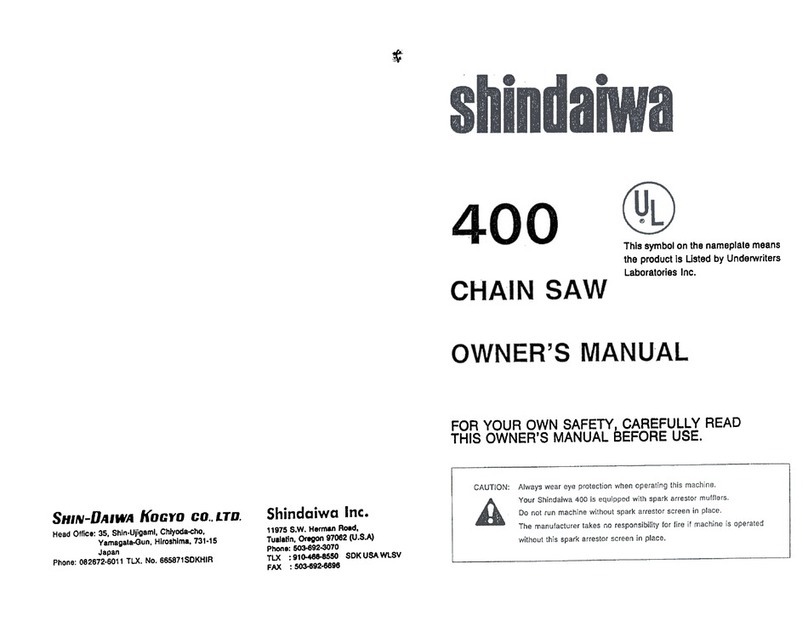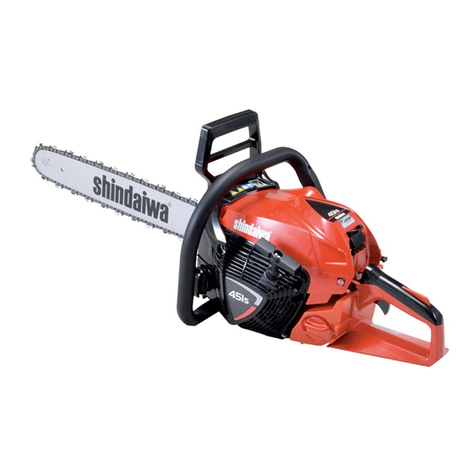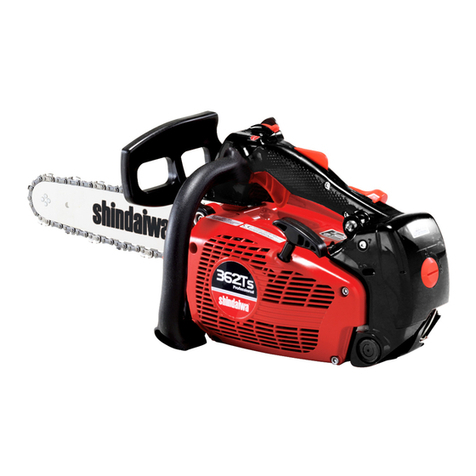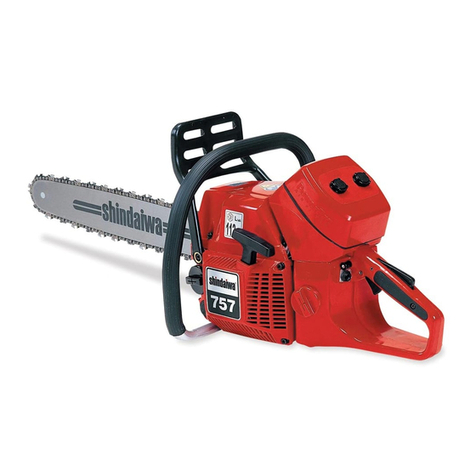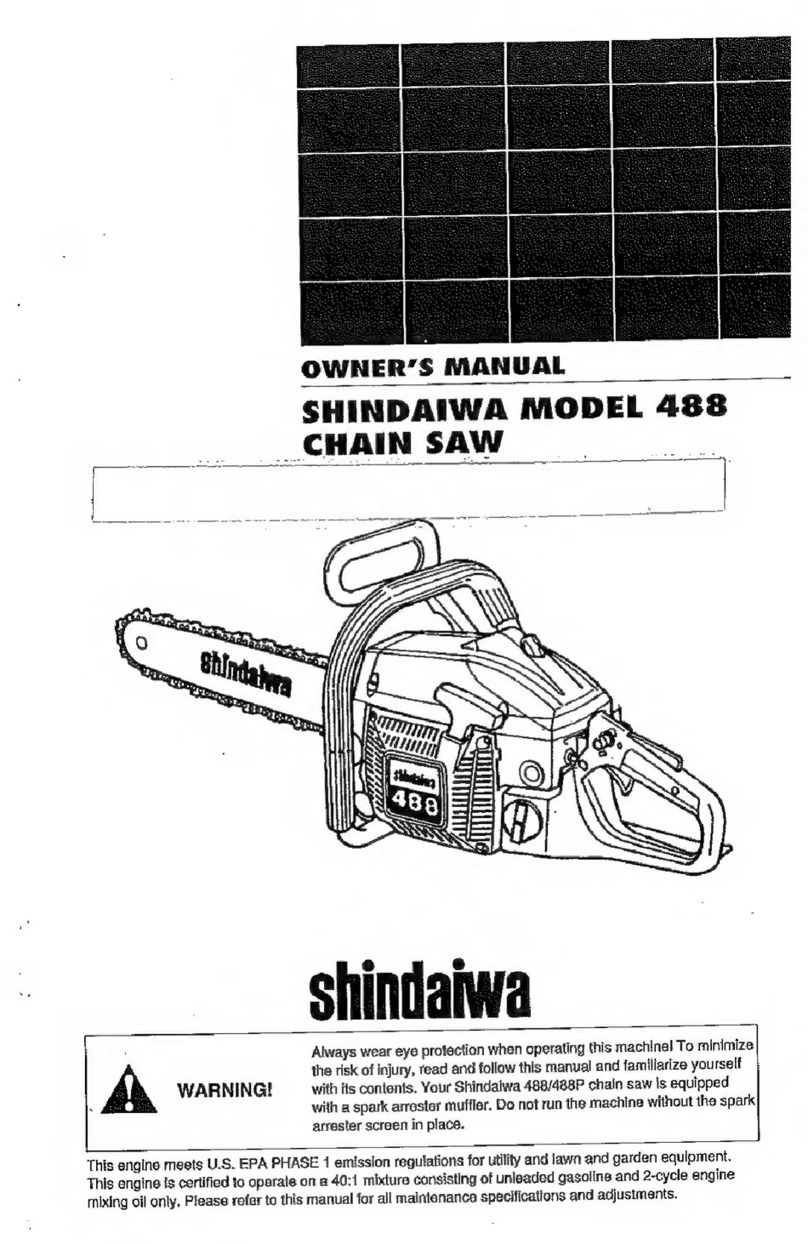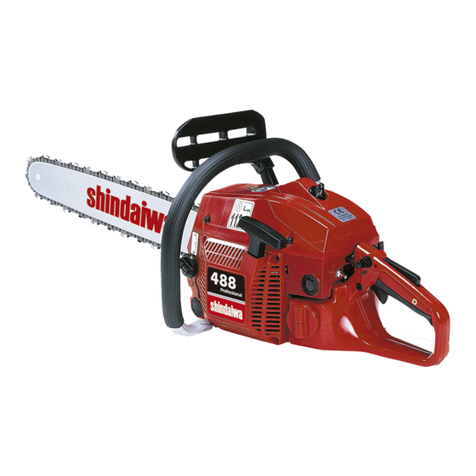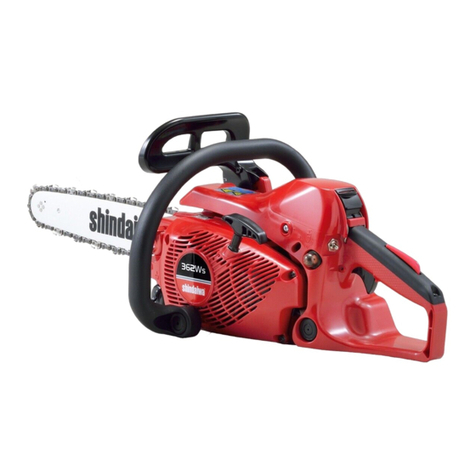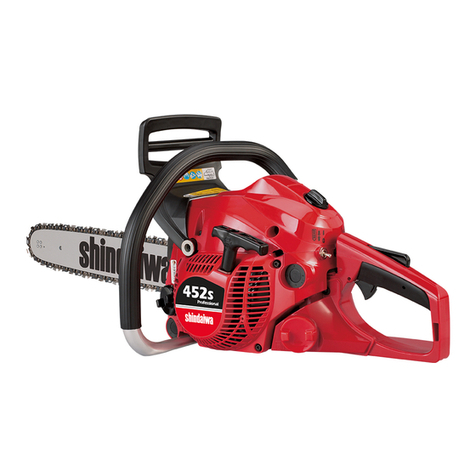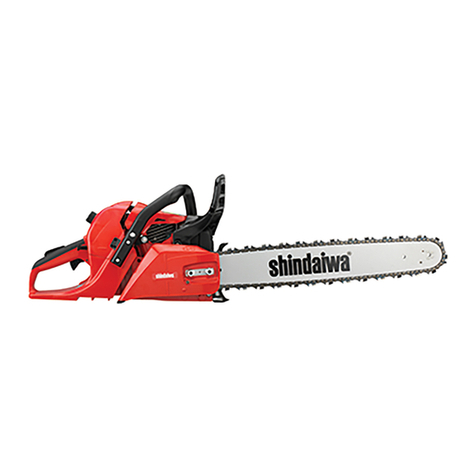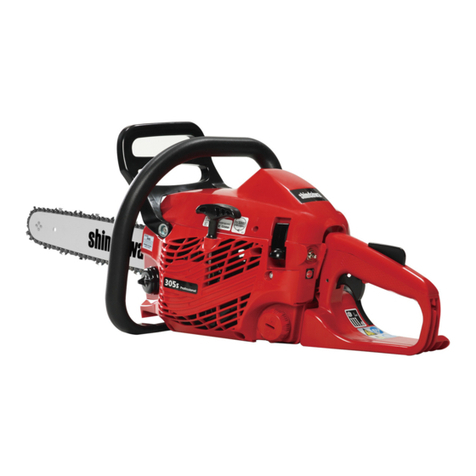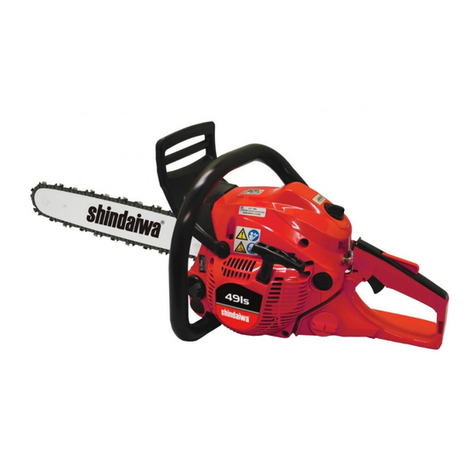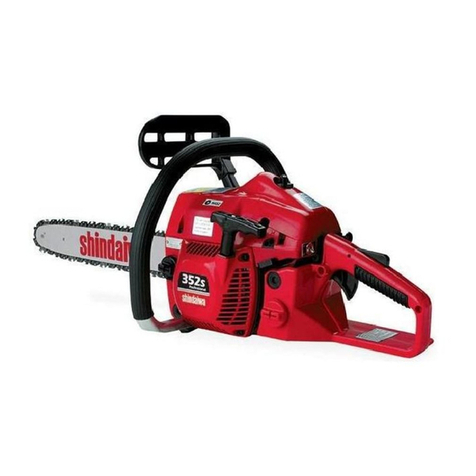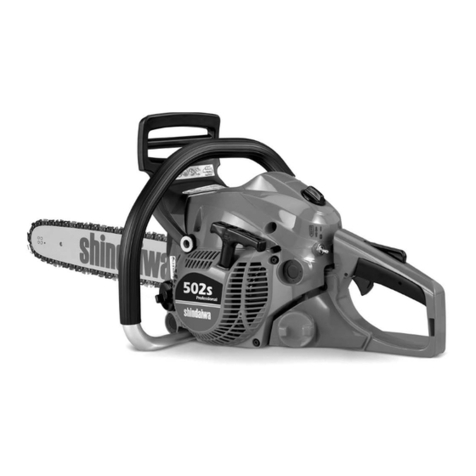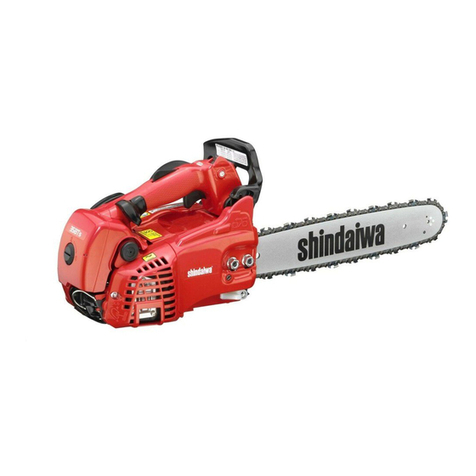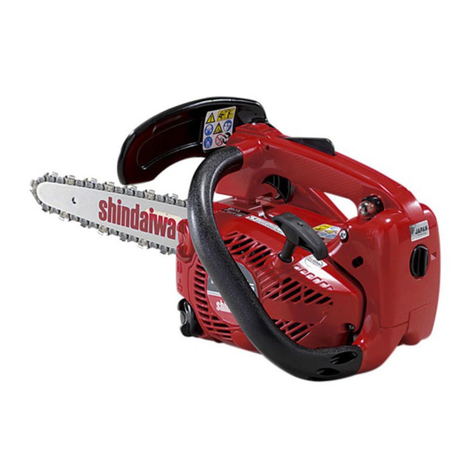9
CUTTING
• Do not operate a chain saw in a tree unless you have
been specifically trained to do so.
• Keep all parts of your body away from the saw chain
when the engine is runnnig.
• Use extreme caution when cutting small-size brush
and saplings because slender material may catch
the saw chain and be whipped toward you or pull
you off balance.
• When cutting a limb that is under tension, be alert
for springback so that you willl not be struck by the
limb or chain saw when the tension in the wood
fibers is released.
• Cutting while on a ladder is extremely dangerous
because the ladder can slip and your control of the
chain saw is limited.
Working aloft should be left to professionals.
• Stop the engine before setting the chain saw down.
WOOD PRACTICES
• Operating a chain saw safety requires a chain saw
in proper working order, sound judgement, and
knowledge of the methods which should be applied
in each cutting situation.
• Do not let any person use your saw unless he has
read this operator’s manual and fully understands
its instructions.
• Never let children operate the saw.
• Use your saw only to cut wood or wood products. Do
not cut solid metal, sheet metal, plastics or any
non-wood materials.
• Stay on the uphill side when bucking or limbing logs
which might roll when cut.
• Keep both feet on the ground. Do not work from
off-the-ground positions.
SERVICES
• All chain saw service, other than items listed in the
operator’s manual maintenance instruction, should
be performed by competent service personnel.
(For example, if improper tool is used to hold the
flywheel in order to remove the clutch, structural
damage to the flywheel could occur and
subsequently could cause the flywheel to burst.)
CHAIN BRAKE
The chain brake’s function is to stop chain rotation
after a kickback. It neither prevents nor reduces
kickback.
Do not depend on the chain brake for protection
against kickback.
Even with a chain brake, depend on your own good
sense and proper cutting methods just as though
there were no chain brake.
Even with normal use and proper maintenance, the
response time of the brake may lengthen.
The following may interfere with the brake’s ability to
protect the operator:
• Saw wrongly held too close to operator’s body.
Kickback time may be too fast even for a perfectly
maintained brake to work in time.
• The operator’s hand may not be in position to
contact the hand guard.
Brake will not be tripped.
• Lack of proper maintenance lengthens the brake’s
stopping time, making it less effective.
• Dirt, grease, oil, pitch, etc. getting into the working
parts of the mechanism may lengthen the stopping
time.
• Wear and fatigue of the activating brake spring, and
wear of the brake/clutch drum and pivot points may
lengthen the brake’s stopping time.
• A dameged hand guard and lever may render the
brake inoperative.
